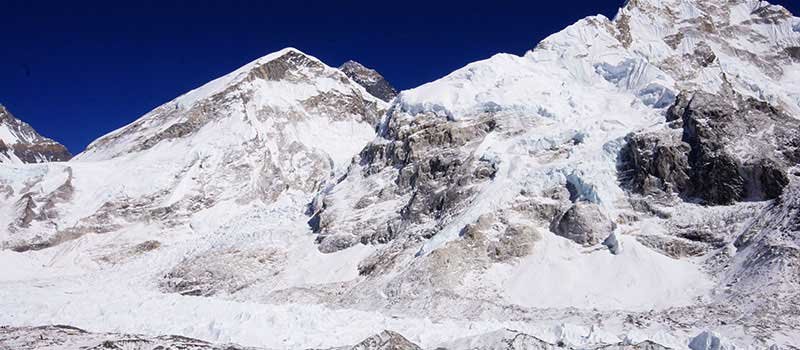Namche, the best place for acclimatization

- 08-Mar-2016
- 0
Everest Base Camp Trek is one of the most celebrated trekking adventures that take you to the world of panoramic and colossal Himalayas, torrential rivers, leisurely yet beautiful glaciers, cultural legacies of indigenous Sherpa community, floral and fauna diversity and a lot more. However, this trekking experience also tests the physical fitness and mental endurance along with the ability to tackle various problems that follows expeditions in the high altitudes. One of the major problems is Altitude Sickness.
Altitude Sickness and Acclimatization
Altitude Sickness is an adverse physical effect of high altitude on humans due to acute exposure to low partial pressure of oxygen at high altitude. The symptoms aren’t measured directly and resemble the case of flu, carbon monoxide poisoning or hangover. The problem of altitude sickness may lead to severe conditions that may eventually be fatal if not addressed properly.
In the treks like Everest base camp, the air becomes thinner with the increase in altitude; the amount of oxygen carried in the blood to muscles is lower as well. Due to this the aerobic capacity of the body is reduced. The body needs to get adapted to the higher altitudes and the only way for adaptation of body to higher altitude is to do minor physical activities before moving further up the landscape. This is generally known as Altitude acclimatization.
High altitude acclimatization is generally the procedure for getting the body to adapt to the higher altitudes. Spending some time at the foothills of higher altitude places increases the tolerance level to the thinner air and higher elevation. Slower rise to the higher altitudes best describes the acclimatization procedure.
Some rules to follow in the altitude acclimatization process are as follows:
• Go slow
• Be hydrated always
• Avoid alcohol, smoking and sleeping tablets and use preventive medicines
• Avoid over exertion
• Dress warmly when trekking
• Immediately descend after being stuck by altitude sickness
Why is Namche Bazzar favored for Altitude Acclimatization in the Everest Base Camp Trek?

Everest trekking route has a lot to offer and the trekkers need not hurry to complete the adventure. There are several reasons behind this including the need for excellent physical conditioning and the chances of missing the moments of nature in this phenomenal region. Getting the acclimatization schedule right is the most essential thing for successful trekking adventure. The same applies when you trek to the Everest region.
Namche Bazzar (3440m/11286ft) is one of the most suitable places in our trekking route for the purpose of acclimatization. Researches suggest that trekkers need to acclimatize at an altitude close to 3500m or 11,500ft before moving further up the altitude. Namche Bazzar is the last town in the trekking route to the Everest Base Camp that meets the requirement as well as has the option of short activities including hiking, exploring the culturally rich villages and monasteries, museums and delicacies that make the preparation for higher altitude worthwhile. Besides this, the trekkers can also do shopping for the trekking materials along with souvenirs during the period of acclimatization.
Everest Base Camp takes us to Kala Patthar (5545m) and we need to get prepared for adjusting with that altitude. With 50% less oxygen getting into the muscles, early acclimatization prepares the trekkers better. Namche Bazzar, known as the ‘Gateway To the Everest’, prepares the trekkers aptly when they spend at least a couple of days in this Sherpa hub.
The impact of better acclimatization at around 3500m has had much better on the trekkers. Research by an US-based trekking agency suggests that the trekkers spending three nights in Namche Bazaar fared better in the trekking adventure than the trekkers spending two days in the hill town. The trekkers stood a far better chance of not getting altitude-related sickness and the additional acclimatization helps people enjoy more in the Everest region.
Thus, the adventures in challenging regions like that of Everest require physical condition along with the following up of the procedure for safety from the pathological impact like that of Altitude sickness. This enhances the enjoyment and adventure the trekkers receive during the expedition.




